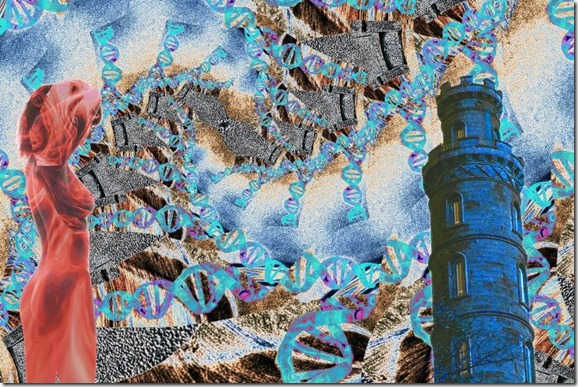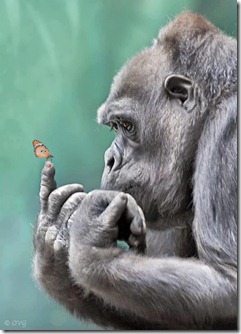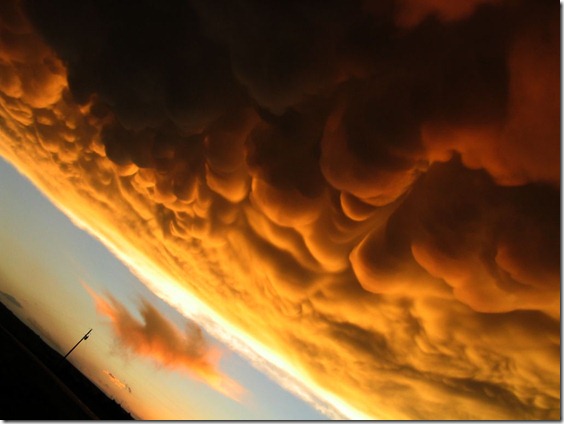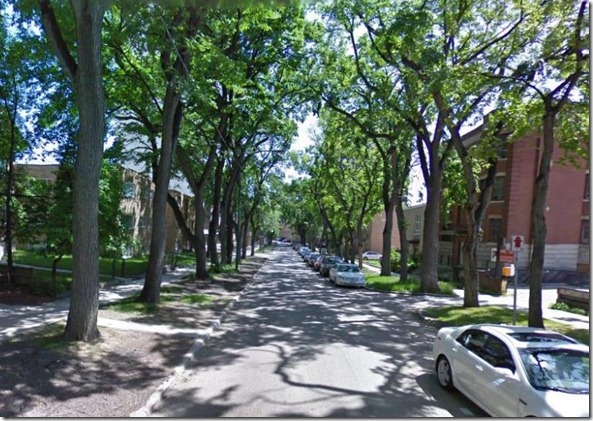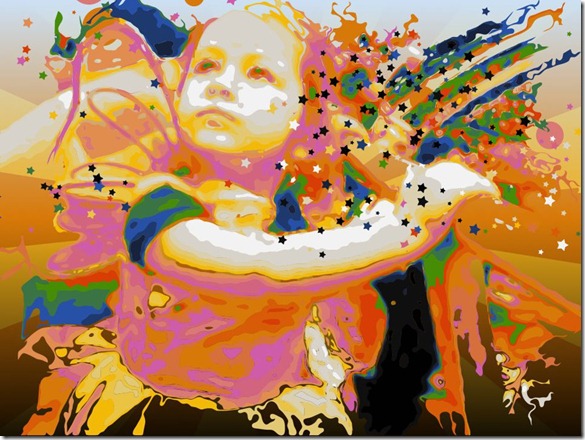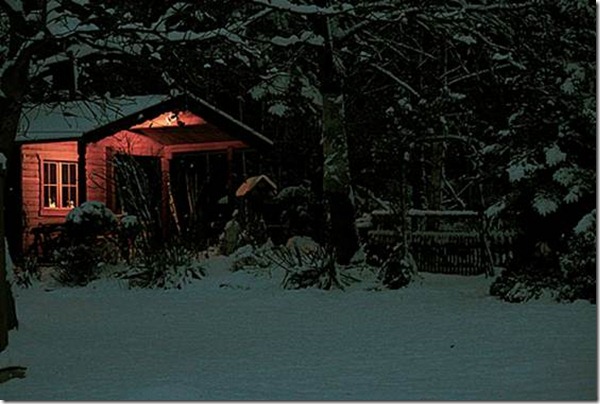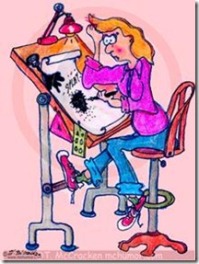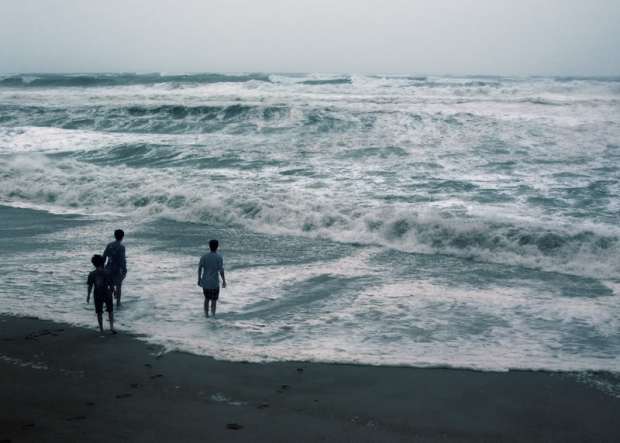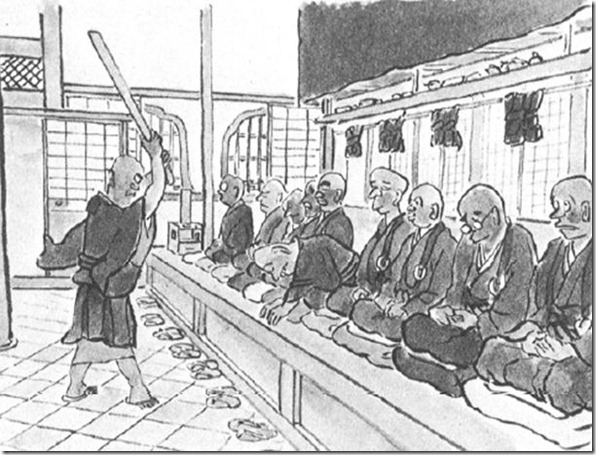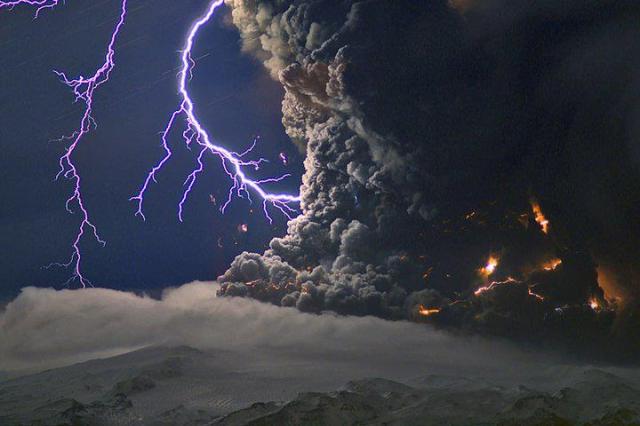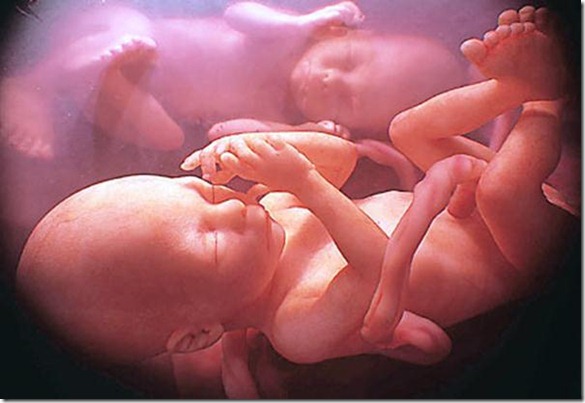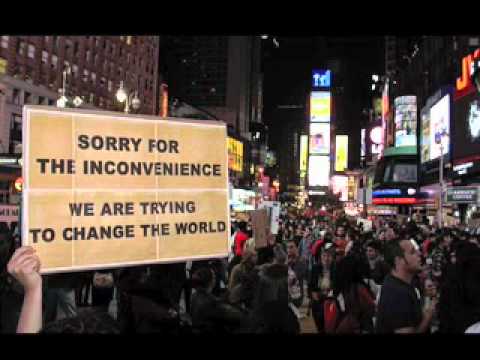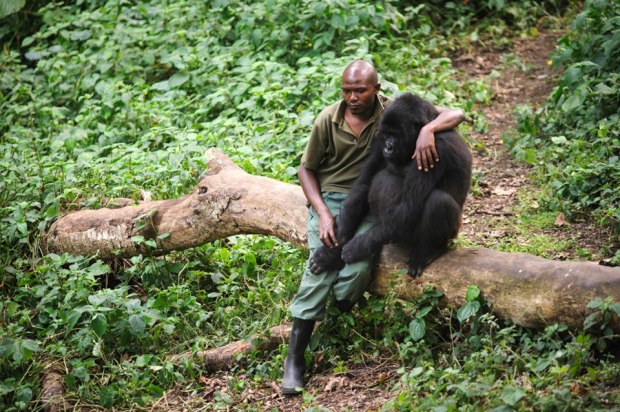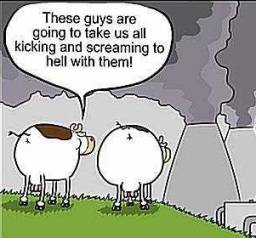Posts Tagged Denver
Everything You “Know” About Life You Learned as a Fetus: Foundations of Myth and Mind and my Personal Involvement with This Research into Our Actual “Human Nature”
Posted by sillymickel in activism, authenticity, being yourself, Culture, globalrevolution, individualism, meaning, philosophy, psychology, spirituality on June 5, 2013
Your Map of Reality Was Written in the Womb: Falls from Grace, Chapter One — Prenatal and Perinatal Psychology and the Phenomenon of Re-Experience
Pre- and Perinatal Psychology and the Phenomenon of Re-Experience
Prenatal and perinatal psychology is the field that deals with the effects of events occurring prior to (prenatal) and surrounding (perinatal) the time of birth upon later life and personality. An ever increasing amount though certainly not all of the information we have about these periods of our lives and their effects is derived through the later and  vivid remembering of these events in a phenomenon known as re-experience. Correspondingly, the two most frequently asked questions about this relatively new field, put by those initially encountering it, are those concerning the specific meanings of the terms perinatal and re-experience.
vivid remembering of these events in a phenomenon known as re-experience. Correspondingly, the two most frequently asked questions about this relatively new field, put by those initially encountering it, are those concerning the specific meanings of the terms perinatal and re-experience.
At the outset, I wish to present an explanation of these two terms and of my unique personal relation to this topic as well as some of my background in exploring it. I will follow this with an historical overview of the field of prenatal and perinatal psychology, which will reveal the key concepts and understandings employed throughout this book.
Re-Experience and Reliving
For over forty years, beginning in 1972 when I was a senior undergraduate in college, I have been involved both personally and professionally in a comprehensive investigation into the phenomenon of re-experience. Also called reliving, this phenomenon is reported to consist of a full somato-cognitive remembering of previous events in a person’s life. Reliving involves experiential but also observable and measurable components, such as brain wave changes, characteristic physiological and neurological changes, and typical observable body movements.
This phenomenon can occur, to varying degrees, in many consciousness-altering modalities—including hypnosis, LSD psychotherapy, primal therapy, rebirthing, and holotropic breathwork; to a considerable degree in re-evaluation co-counseling and treatment for post-traumatic stress disorder; and, occasionally and spontaneously, even in mainstream forms of psychotherapy, counseling, and “growth seminars.”
to a considerable degree in re-evaluation co-counseling and treatment for post-traumatic stress disorder; and, occasionally and spontaneously, even in mainstream forms of psychotherapy, counseling, and “growth seminars.”
Re-experience is a more vivid and more completely somatic catharsis than what has been described in psychotherapy in terms of abreaction. It is in such contrast to normal abreaction that when these seemingly bizarre yet healing events have spontaneously erupted in traditional or mainstream Western contexts they have usually been mistakenly labeled psychotic, been intervened upon, and then aborted—via drugs and other highly coercive measures—by the attending therapeutic authorities.
.
However, with an increasing appreciation for their therapeutic value, these events are gradually becoming understood and accepted in therapeutic contexts and thus allowed to complete themselves and to instruct the participants and observers in their meanings. Therefore, they appear to represent something new in our culture in terms of both a way of approaching knowledge and in terms of the kinds of information that are discovered (Grof 1976, 1985; Hannig 1982; Janov 1971; Lake 1966/1986; Noble, 1993; Stettbacher, 1992).
My Relationship to the Phenomenon of Re-Experience
My interest in the phenomenon of reliving began forty-four years ago at Franklin and Marshall College in Lancaster, Pennsylvania. As an undergraduate there I was most inspired by a course in religious studies titled “Religious and Psychological Approaches To Self-Understanding.” I was so inspired by the course that I constructed my major around its topic and initially even used the same title for my program’s name. This major in “self-understanding” would lead me, in a few years, to a profound interest in and exploration of primal therapy, as presented by Arthur Janov (1970) in his much-publicized book, The Primal Scream: Primal Therapy: The Cure for Neurosis.
 By 1972, I had completed all but the one final semester for a B.A. That semester was to include the cumulative project—required of such a Special Studies (individually structured) major. However, since my project would focus on primal therapy and one of primal therapy’s basic premises is that knowledge cannot really be known except through experience, I could not in good conscience turn in a project describing primal therapy without first experiencing it. Consequently I withdrew from college, for what was supposed to be only a semester, with the intention of “going through” primal therapy and then returning to school to write my cumulative project on it. In those days, the entire process of primal therapy was reputed to take only three to six months.
By 1972, I had completed all but the one final semester for a B.A. That semester was to include the cumulative project—required of such a Special Studies (individually structured) major. However, since my project would focus on primal therapy and one of primal therapy’s basic premises is that knowledge cannot really be known except through experience, I could not in good conscience turn in a project describing primal therapy without first experiencing it. Consequently I withdrew from college, for what was supposed to be only a semester, with the intention of “going through” primal therapy and then returning to school to write my cumulative project on it. In those days, the entire process of primal therapy was reputed to take only three to six months.
But a lot was unknown about that modality in those early days. As it turned out, I would not return to school to complete that final project until 1978—at which point I had five years’ experience of primal therapy behind me and was living in Denver, Colorado.
In addition to these experiences, I have amassed a broad array of other experience and training over the years that have contributed to my understanding of re-experience and of this field in general. Besides my two decades and more of primal therapy … both formally and in “the buddy system” … I have received training as a primal therapist. I am also a trained rebirther, having explored that modality since 1986. I have been experientially exploring the modality of holotropic breathwork since 1987 and did training with Stanislav and Christina Grof in that technique.
Finally, I have been facilitating people in their journeys into deep inner primal and holotropic states since 1975. I’ve given individual sessions in all three modalities of primal therapy, rebirthing, and holotropic breathwork. And with my wife, Mary Lynn Adzema, I conducted three day workshops in something we called primal breathwork. I’ve conducted two-day group workshops in this modality at conferences, which were attended by as many as sixty experiencers at a time.
Thus, I have experience in my own process in these modalities; but in addition I have facilitated for others on many occasions, and at times, it was my main profession—though most of my life I have spent in writing, teaching, and research.
Pre- and Perinatal Re-Experience
Re-experience of birth and of the events immediately prior to and after birth are termed perinatal—from the Greek, literally “surrounding birth.” It has been widely described at this point by a number of authors but is most closely associated with the work of Stanislav Grof, Arthur Janov, and Frank Lake.
However, one significant and as yet little explored or understood phenomenon, arising also from the modalities mentioned, is that of prenatal re-experience. In this case, the experiencer reports … and observationally appears to be … experiencing events that happened en utero, sometimes going back as far as sperm, egg, and zygote states (Buchheimer 1987; Farrant 1987; Grof 1976, 1985; Hannig 1982; Janov 1983; Lake 1981, 1982; Larimore 1990a, 1990b; Larimore & Farrant, 1995).
These reports of remembering experiences that occurred before birth are at such variance with Western professional and popular paradigms that they are met with near-universal incredulity and, too often, premature dismissal. Yet the evidence from the mounting numbers of experiential reports and empirical studies attests that something which is at least unique and interesting is going on here.
Nevertheless, much of this prenatal information is thus far unformulated, untheorized, and unintegrated into a coherent structure for making sense of these experiences. This book will go a long way toward doing just that—making sense of prenatal experiences and exploring the implications and prospects of the knowledge gleaned from this fascinating new area of research and which arises from the vision that an exposure to this material induces.
The present work represents an attempt to bring this new information concerning our origins and our earliest experiences into such a coherent structure. After the initial overview of the field to be presented in this chapter, I deepen that review of the current understanding and findings in this area in making a case, in Chapter Two, for the legitimacy of prenatal spirituality.
First, let us take a closer look at what we know about the time before and around birth and what it means for us throughout our lives.
Overview of the Pre- and Perinatal Psychology Field—Early Theorists: Psychoanalysis and Birth
Sigmund Freud — Birth as Prototype for All Anxiety

 While Freud (1927) disregarded major effects of birth on personality, he still saw the birth experience as the prototype of all later anxiety. His overall disregard of birth, however, was largely influenced by the belief—although discredited (see Chamberlain, 1988), still common in mainstream psychology and medicine today—that a newborn does not possess the neurological capacity for consciousness at birth.
While Freud (1927) disregarded major effects of birth on personality, he still saw the birth experience as the prototype of all later anxiety. His overall disregard of birth, however, was largely influenced by the belief—although discredited (see Chamberlain, 1988), still common in mainstream psychology and medicine today—that a newborn does not possess the neurological capacity for consciousness at birth.
Otto Rank — Psychoanalysis, Birth Trauma, Foundations of Personality and Some Myth, Separation Anxiety
Other early psychoanalysts disagreed with Freud on this. Otto Rank is the most notable of these. Following Freud’s basic psychoanalytic reasoning for personality patterns in early infancy,  he asserted basic patterns of experience and ideas that are rooted in even earlier experience. Rank (1929) claimed the deepest, most fundamental patterns of these personality constructs originated at the time of birth, which Freud thought was not possible. Based upon the dream, fantasy, and other patterns of associations arising in his patients in psychoanalysis, Rank postulated a birth trauma, which he saw as a critical event in laying down in each of us particular patterns of thinking, motivation, and emotion for the rest of our lives. Notable among these prototypes was a feeling of a paradise once known but somehow lost, a separation anxiety caused by the separation at birth, and a resulting futile and lifelong struggle to re-unite with that golden age and that early beloved because of a desire to return to the womb.
he asserted basic patterns of experience and ideas that are rooted in even earlier experience. Rank (1929) claimed the deepest, most fundamental patterns of these personality constructs originated at the time of birth, which Freud thought was not possible. Based upon the dream, fantasy, and other patterns of associations arising in his patients in psychoanalysis, Rank postulated a birth trauma, which he saw as a critical event in laying down in each of us particular patterns of thinking, motivation, and emotion for the rest of our lives. Notable among these prototypes was a feeling of a paradise once known but somehow lost, a separation anxiety caused by the separation at birth, and a resulting futile and lifelong struggle to re-unite with that golden age and that early beloved because of a desire to return to the womb.
Nandor Fodor — Dreamwork, Birth and Prenatal Processing and Relivings, Prenatal Origins of Consciousness and Trauma
Also a psychoanalyst, Nandor Fodor (1949) focused on the reflections of birth and prenatal material in dreams. He also designed interventions in therapy to release the negative effects of birth and to process prenatal memories. He was the first to mention actual relivings of birth, in which veridical memories were recovered. He agreed with Rank on many points, but he stressed the origins of consciousness and of trauma being in the prenatal period.
Donald W. Winnicott — First Primal Therapist? Birth Relivings, Importance of Birth—Negative Imprints but Positive Effects, Too
 Another psychoanalyst, and pediatrician as well, Winnicott (1958) also held that birth is remembered and is important. He insisted that the birth trauma is real, but he disagreed with Rank and Fodor that it is always traumatic. He suggested that a normal, nontraumatic, birth has many positive benefits, particularly for ego development. Still, he contended that traumatic birth is permanently etched in memory and leaves a lifetime psychological scar. Winnicott (1958) also suggested the possibility of prenatal trauma.
Another psychoanalyst, and pediatrician as well, Winnicott (1958) also held that birth is remembered and is important. He insisted that the birth trauma is real, but he disagreed with Rank and Fodor that it is always traumatic. He suggested that a normal, nontraumatic, birth has many positive benefits, particularly for ego development. Still, he contended that traumatic birth is permanently etched in memory and leaves a lifetime psychological scar. Winnicott (1958) also suggested the possibility of prenatal trauma.
He has been called the first primal therapist in that he described the first birth primals—actual observable relivings of birth—spontaneously occurring by some of his patients during their sessions with him. Thus he was beginning the trend beyond mere talking association or dream analysis as ways of accessing and integrating this material.
Overview of the Pre- and Perinatal Psychology Field — Later Research and Theorists: Hypnosis, Primal Therapy, and Birth
David Cheek and Leslie LeCron — Hypnosis, Birth Memories and Imprints on Personality and Relation to Psychiatric Disorders
Cheek and LeCron (1968) used hypnosis to retrieve early memories in their patients. They discovered that memories earlier than what they expected, going back to birth, were possible. Importantly, a relief of symptoms seemed to follow from the re-experience of these birth memories. They came to the conclusion that a birth imprint occurs, which is induced by the extreme stress of that time and is resistant to fading from later experience. Further they asserted that this imprint could be the cause of a wide spectrum of psychiatric and psychosomatic disorders.
Importantly, a relief of symptoms seemed to follow from the re-experience of these birth memories. They came to the conclusion that a birth imprint occurs, which is induced by the extreme stress of that time and is resistant to fading from later experience. Further they asserted that this imprint could be the cause of a wide spectrum of psychiatric and psychosomatic disorders.
Leslie Feher — Psychoanalysis, Birth, Cutting of Umbilical Cord, Separation Trauma
Leslie Feher (1980) sought to extend the Freudian tradition farther back into areas that, she asserts, were until only recently unknowable.  Thus, she describes a natal theory and therapy that includes experiences of cutting the umbilical cord, birth, and even prebirth. In fact, she considers the cutting of the umbilical cord to be central in her theory of trauma, calling it the “crisis umbilicus,” and echoes Fodor in claiming that it is the true origin of the castration fears made so much of in psychoanalysis. This is so because, according to Feher, the cord and placenta is an object of security and is considered by the fetus to be part of him- or herself. Thus, this cutting represents a supreme threat in being a separation from a total life support system, a major organ, a part of oneself. In these ways, she also brings forward for renewed appreciation Rank’s speculations on the element of separation trauma as a crucial element of the birth trauma.
Thus, she describes a natal theory and therapy that includes experiences of cutting the umbilical cord, birth, and even prebirth. In fact, she considers the cutting of the umbilical cord to be central in her theory of trauma, calling it the “crisis umbilicus,” and echoes Fodor in claiming that it is the true origin of the castration fears made so much of in psychoanalysis. This is so because, according to Feher, the cord and placenta is an object of security and is considered by the fetus to be part of him- or herself. Thus, this cutting represents a supreme threat in being a separation from a total life support system, a major organ, a part of oneself. In these ways, she also brings forward for renewed appreciation Rank’s speculations on the element of separation trauma as a crucial element of the birth trauma.
Arthur Janov — Primal Therapy, Traumas of Birth and Early Life and Healing Them, Empirical Foundations and Neurophysiology of Early Events and Healing
 Perhaps the major theorist and popularizer of the phenomenon of re-experience (which he termed primaling), Janov was reluctant to acknowledge the pervasiveness of pre- and perinatal re-experience and trauma. Yet when he did, it was in a major work on birth trauma, which remains as a touchstone in the field in its depth and detail. Imprints: The Lifelong Effects of the Birth Experience, published in 1983, among other things places birth as the determining factor in creating basic personality constructs, called sympathetic and parasympathetic, which roughly coincide with the more common terms introversion and extroversion.
Perhaps the major theorist and popularizer of the phenomenon of re-experience (which he termed primaling), Janov was reluctant to acknowledge the pervasiveness of pre- and perinatal re-experience and trauma. Yet when he did, it was in a major work on birth trauma, which remains as a touchstone in the field in its depth and detail. Imprints: The Lifelong Effects of the Birth Experience, published in 1983, among other things places birth as the determining factor in creating basic personality constructs, called sympathetic and parasympathetic, which roughly coincide with the more common terms introversion and extroversion.
 This work is more empirical and neurophysiologically rooted than most in the field. While the book is recognized in the field, Janov and his work have not gotten anywhere near the respect and attention that they deserve. He remains the unfortunate kicking-boy of a movement that is itself scapegoated by the academy and the larger scientific community.
This work is more empirical and neurophysiologically rooted than most in the field. While the book is recognized in the field, Janov and his work have not gotten anywhere near the respect and attention that they deserve. He remains the unfortunate kicking-boy of a movement that is itself scapegoated by the academy and the larger scientific community.
Thomas Verny — Primal Therapy, Birth, Especially Womb Life and Relation to Personality … Prenatal Mother-Infant Bonding
![]() The actual stimulus for a new field of pre- and perinatal psychology and the Association for Pre- and Perinatal Psychology and Health—APPPAH was Thomas Verny’s (1981) The Secret Life of the Unborn Child.
The actual stimulus for a new field of pre- and perinatal psychology and the Association for Pre- and Perinatal Psychology and Health—APPPAH was Thomas Verny’s (1981) The Secret Life of the Unborn Child. His work brought together a good deal of the new empirical research that had opened the doors to us on the events in the womb. While himself a practitioner of “holistic primal therapy,” he integrated the accumulating data from the phenomenon of re-experience with the new information from the more traditional, “objective,” scientific research into the prenatal—made possible by the latest advances in technology.
His work brought together a good deal of the new empirical research that had opened the doors to us on the events in the womb. While himself a practitioner of “holistic primal therapy,” he integrated the accumulating data from the phenomenon of re-experience with the new information from the more traditional, “objective,” scientific research into the prenatal—made possible by the latest advances in technology.
One of his conclusions from this combination of lines of inquiry was that “birth and prenatal experiences form the foundations of human personality” (1981, p. 118).  His other conclusions center around the importance of intrauterine bonding in that his research strongly suggests that the prenate, via pathways hormonal and unknown, picks up on the thoughts, feelings, and attitudes of the mother. More importantly, he asserted, the imprint of these factors on the fetus predetermines the later mother-child relationship. He emphasized that positive thoughts and feelings toward the fetus—”maternal love”—acts to cushion the new individual against the normal stresses and unavoidable harshness inherent in birth and early infancy. Yet all of this cannot be completely avoided. “Birth is like death to the newborn,” writes Verny (1984, p. 48).
His other conclusions center around the importance of intrauterine bonding in that his research strongly suggests that the prenate, via pathways hormonal and unknown, picks up on the thoughts, feelings, and attitudes of the mother. More importantly, he asserted, the imprint of these factors on the fetus predetermines the later mother-child relationship. He emphasized that positive thoughts and feelings toward the fetus—”maternal love”—acts to cushion the new individual against the normal stresses and unavoidable harshness inherent in birth and early infancy. Yet all of this cannot be completely avoided. “Birth is like death to the newborn,” writes Verny (1984, p. 48).
David Chamberlain — Hypnosis, Confirmed Validity of Birth Memories
David Chamberlain (1988), for many years the president of APPPAH (the Association for Prenatal and Perinatal Psychology and Health), has further substantiated the claim of consciousness at birth and the accuracy of pre- and perinatal memory in the phenomenon of re-experience.  He reported one study he did in which he compared hypnotically retrieved memories of birth from mother and child and found an astonishing degree of conformity in their responses. Of note was the degree of inner consistency and originality in these memories as reported by the former neonate. They often contained technical details of the delivery and labor unlike what would be expected of the medically unsophisticated, a perceptive critique of the way the birth was handled, and other details of the event that could not have been known through normal conscious channels.
He reported one study he did in which he compared hypnotically retrieved memories of birth from mother and child and found an astonishing degree of conformity in their responses. Of note was the degree of inner consistency and originality in these memories as reported by the former neonate. They often contained technical details of the delivery and labor unlike what would be expected of the medically unsophisticated, a perceptive critique of the way the birth was handled, and other details of the event that could not have been known through normal conscious channels.
.
Overview of the Pre- and Perinatal Psychology Field — Later Theorists: Societal Implications, Psychohistory, Birth and Prenatal
Lloyd deMause — Psychohistory, Prenatal and Poisonous Placenta, Sociohistorical Implications of Gestational and Birth Events
 Lloyd deMause (1982, 1987) was instrumental in establishing the new interdisciplinary field of psychohistory. In his study of historical happenings he discovered that stages in the progression of events related to stages in the progression of gestation and birth … which stages happened to correspond, by the way, remarkably well with Stanislav Grof‘s four stages of birth, his Basic Perinatal Matrices.
Lloyd deMause (1982, 1987) was instrumental in establishing the new interdisciplinary field of psychohistory. In his study of historical happenings he discovered that stages in the progression of events related to stages in the progression of gestation and birth … which stages happened to correspond, by the way, remarkably well with Stanislav Grof‘s four stages of birth, his Basic Perinatal Matrices.
 He found that natal imagery especially predominates in societies during times of crisis and war, when national purpose and state of affairs are construed as a need to escape or break free from an enclosing and constricting force. He also noted the suffering fetus and the poisonous placenta as sources of these later metaphors and imagery. In fact, in studying the imagery in the national media of various countries he has been able to predict political, social, and economic events such as wars and invasions, recessions, and political downfalls.
He found that natal imagery especially predominates in societies during times of crisis and war, when national purpose and state of affairs are construed as a need to escape or break free from an enclosing and constricting force. He also noted the suffering fetus and the poisonous placenta as sources of these later metaphors and imagery. In fact, in studying the imagery in the national media of various countries he has been able to predict political, social, and economic events such as wars and invasions, recessions, and political downfalls.
His work begins to look at the prenatal influences and imprints and how they related to macrocosmic issues of politics, history, social movements, and issues of war and peace.
Later Theorists — Dream Analysis
Francis Mott — Conception and Gestational Basis of Myth, Archetype, all Patterns of Macrocosmic and Microcosmic Realities and the Nature of Reality, Devolutional Model of Development
Francis Mott’s work is less well known even by this field’s standards, yet it is undeniably impressive. Mott’s (1960, 1964) major contribution lies in his focusing on basic patterns of mind and cosmos that correlate with prenatal feelings and states. He traced consciousness back to events around conception and saw these events as instituting patterns affecting all later experience and conceptual constructions. Through dream analysis he elicited these “configurations,” and he demonstrated their manifestation as seemingly universal archetypes in myths and universal human assumptions about the nature of reality.
In fact, through his study of womb and conception patterns he claimed to have discovered patterns that underlie and unite all of reality at all levels of manifestation—astronomical, social, personal, cellular, and even nuclear. While this may seem rather grandiose, his work was highly regarded and admired by Carl Jung.
Mott also carried forward the intimations of earlier prenatal theoreticians, notably Rank and Fodor, on the gestational basis of archetypes. While he does not address or seek to discredit the range of, supposedly genetic, archetypes postulated by Jung, his work is highly suggestive of an experiential, specifically, pre- and perinatal, as opposed to genetic basis for many of these.
Denial and Incest Taboo
Mott (1960) also helped us to understand why if these prenatal memories are possible they are not more prevalent by suggesting denial is necessary in order to protect against incestuous feelings that might arise around feelings remembered from being inside one’s mother.
Devolutional Model of Consciousness Development
Finally, he made the postulation—hugely relevant to the theme of this work—that our original expanded capacity to feel is diminished, as he says, “divided,” by experience not increased by it. The idea is that there is a reduction in awareness as a result of early traumatic events, beginning around conception and then on, and not the buildup of consciousness and feeling that we assume from the mechanistic paradigm that sees consciousness as a byproduct of increasing physical, specifically brain, activity during our early years. (See, for example, The Doors of Perception: Each of Us Is Potentially Mind At Large… When Perception Is Cleansed, All Kinds of Nonordinary Things Happen and Occupy Science … A Call for a Scientific Awakening: In Tossing Away Our Species Blinders, We Approach a Truth Far Beyond Science.)
Later Theorists — Breathwork
Stanislav Grof — Breathwork, LSD, Birth and Prenatal, Myth and Archetype, Spiritual and Consciousness
![]() A pioneer in this prenatal area is Stanislav Grof (1976, 1980, 1985, 1990, to name a few). His many works, providing a framework for conceptualizing perinatal and transpersonal experiences, are a profound and useful starting point for an investigation into this area.
A pioneer in this prenatal area is Stanislav Grof (1976, 1980, 1985, 1990, to name a few). His many works, providing a framework for conceptualizing perinatal and transpersonal experiences, are a profound and useful starting point for an investigation into this area.
In his use of LSD beginning in 1956 for psychotherapy, called psycholytic therapy, he discovered four levels of experience of the unconscious: the sensory, the biographical, the perinatal, and the transpersonal. He noted a tendency for growth and healing to occur in a progressive way through these levels. The sensory band is the level of expanded sensory awareness and is usually initially encountered by participants. The biographical band is the realm of the personal unconscious wherein unintegrated and traumatic memories and material from childhood and one’s personal history are retrieved, often relived, and integrated. The perinatal level of experience usually follows after dealing with the biographical material and involves the remembering, re-experiencing, and integrating of material that is related to the time prior to and surrounding birth. The transpersonal band, the level of spiritual experience, is usually reached after dealing with the other three levels.
Four Modes of Experiencing—the Basic Perinatal Matrices
Grof has also delineated four matrices of experience, four general experiential constructs, which he called basic perinatal matrices (BPMs).  He discovered that experiences at all levels of the unconscious often group themselves in four general ways that are roughly related to the four stages of birth. Thus, Basic Perinatal Matrix I (BPM I) is related to the generally blissful or “oceanic” feelings that often characterize the fetus’s state in the womb in early and middle pregnancy. BPM II is characterized by “no exit,” hellish feelings that are related to the situation of the fetus in late pregnancy when the confines of the womb become ever more apparent but there is as yet no indication of any possibility of relief. BPM III relates to the birth process itself, the birth struggle, which is still characterized by feelings of compression and suffering but in which there is movement and change and thus hope of relief through struggle. If BPM II can be compared to hell, where there is no hope, BPM III is more like purgatory. Finally, BPM IV relates to the actual entry into the world, the termination of the birthing process, and is characterized by feelings of triumph, relief, and high, even manic, elation.
He discovered that experiences at all levels of the unconscious often group themselves in four general ways that are roughly related to the four stages of birth. Thus, Basic Perinatal Matrix I (BPM I) is related to the generally blissful or “oceanic” feelings that often characterize the fetus’s state in the womb in early and middle pregnancy. BPM II is characterized by “no exit,” hellish feelings that are related to the situation of the fetus in late pregnancy when the confines of the womb become ever more apparent but there is as yet no indication of any possibility of relief. BPM III relates to the birth process itself, the birth struggle, which is still characterized by feelings of compression and suffering but in which there is movement and change and thus hope of relief through struggle. If BPM II can be compared to hell, where there is no hope, BPM III is more like purgatory. Finally, BPM IV relates to the actual entry into the world, the termination of the birthing process, and is characterized by feelings of triumph, relief, and high, even manic, elation.![]()
In his descriptions of the levels of experience and the matrices of perinatal experience, Grof has provided useful maps of the unconscious and experience in nonordinary states, which have incredible heuristic value in our understanding of cross-cultural religious and spiritual experience, psychopathology, personal growth, and consciousness and personality in general.  And they have been utilized successfully in providing a context and guide for many tens of thousands of participants in his psycholytic and holotropic therapies.
And they have been utilized successfully in providing a context and guide for many tens of thousands of participants in his psycholytic and holotropic therapies.
However, while Grof is exhaustive in his descriptions of fetal and perinatal experience, he says less about the earlier experiences in the womb—the first trimester—and even less about conception and the experiences of sperm and egg—what is known as cellular consciousness. Still, this area is beginning to be discussed among his followers. And through his current nondrug modality, called holotropic breathwork, people are accessing these areas and beginning to give word to them (e.g., Carter, 1993).
Frank Lake—Breathwork, First Trimester, Early Experience as Foundation for Myths
 Frank Lake, though less well-known again, has probably been the premier theoretician on the topic of prenatal events during the first three months of gestation. Just prior to his death in the early eighties, he wrote a culmination of his thirty-year investigation into pre- and perinatal influence in two works titled Tight Corners in Pastoral Counselling and The First Trimester. In these works he goes beyond his other works (for example, 1966) in placing the roots of all later experience, and in particular, distress, at the first three months of physical existence.
Frank Lake, though less well-known again, has probably been the premier theoretician on the topic of prenatal events during the first three months of gestation. Just prior to his death in the early eighties, he wrote a culmination of his thirty-year investigation into pre- and perinatal influence in two works titled Tight Corners in Pastoral Counselling and The First Trimester. In these works he goes beyond his other works (for example, 1966) in placing the roots of all later experience, and in particular, distress, at the first three months of physical existence.
Lake began his investigation of re-experience in 1954. Like Stanislav Grof, he did this using LSD, initially, in the psycholytic therapy that was being developed at that time to facilitate therapeutic abreaction. Later he, again like Grof, developed a nondrug modality to accomplish the same thing.  His method of “primal therapy” employed a type of fast breathing—again, like Grof’s later technique—to access theta-wave brain levels, which are levels of consciousness that he saw as crucial to accessing and integrating these memories.
His method of “primal therapy” employed a type of fast breathing—again, like Grof’s later technique—to access theta-wave brain levels, which are levels of consciousness that he saw as crucial to accessing and integrating these memories.
His thirty-year research led him to the realization of the importance of ever earlier experience. Thus his earlier stress on the importance of birth gave way to his later emphasis on the first trimester in 1981 (Tight Corners in Pastoral Counselling) and in 1982 (The First Trimester).
 He stressed the maternal-fetal distress syndrome, beginning at around implantation, as a major time of trauma. He also described a blastocystic stage of relative bliss just prior to that.
He stressed the maternal-fetal distress syndrome, beginning at around implantation, as a major time of trauma. He also described a blastocystic stage of relative bliss just prior to that.
His one other major disagreement with Grof was his belief that the mythological and symbolical elements described by Grof were a product of LSD and that the first trimester events were the actual roots of much of such symbolism and supposed transpersonal/mythological scenarios (1981, p. 35).
Later Theorists — Myth and Sacred Text/Mysticism
S. Giora Shoham — Devolutional Model of Development, Falls from Grace
 While not strictly a pre- and perinatal psychologist, I include this too little-known theoretician and criminologist because of the close relationship and influence his work has had upon my own work regarding these Falls from Grace. Falls from Grace and other devolutional models of consciousness postulate that during life and over time, beginning at conception, we actually are reduced in consciousness and awareness, not increased in it, and it corresponds to a “brain as reducing valve” theory of consciousness. (Again, See The Doors of Perception and Occupy Science.)
While not strictly a pre- and perinatal psychologist, I include this too little-known theoretician and criminologist because of the close relationship and influence his work has had upon my own work regarding these Falls from Grace. Falls from Grace and other devolutional models of consciousness postulate that during life and over time, beginning at conception, we actually are reduced in consciousness and awareness, not increased in it, and it corresponds to a “brain as reducing valve” theory of consciousness. (Again, See The Doors of Perception and Occupy Science.)
 While I initially constructed and wrote down my devolutional theory of consciousness—Falls from Grace—without the benefit of Shoham’s work, upon discovering it I could not help but be both confirmed and reinspired by the astounding resonance his understanding has with my own.
While I initially constructed and wrote down my devolutional theory of consciousness—Falls from Grace—without the benefit of Shoham’s work, upon discovering it I could not help but be both confirmed and reinspired by the astounding resonance his understanding has with my own.
Shoham (1979, 1990) starts his devolutional model in the womb and carries it through birth, weaning, and the oedipal periods of development. Though, as I delineate in Part Two, I disagree with his model by beginning mine at the creation of sperm and egg—as does other devolutional theorists like Francis Mott and David Wasdell—in virtually all other major instances his model corresponds to my own if one simply … in keeping with a normal trend in child development in general as it begins to integrate the new pre- and perinatal evidence … places everything back a little farther in time—in this case, specifically, one stage back.
Later Prenatal Psychology Theorists — Cellular Memory and Conception, Foundations of Myth and Personality, Spirituality and Soul
Lietaert Peerbolte — Conception and Cellular Memory, Soul, Spirituality
Peerbolte (1954) was one of the earliest theorists to relate spirituality to conception and sperm/egg dynamics. In addition to claiming that a regression to conception is the inevitable result of all prenatal states, he traced the sense of “I” — the “I-function” — back to the egg, existing even in the mother’s ovaries. He further postulated that the spiritual self was invisibly present within the field of attraction between the egg and the sperm. Correspondingly, he was the first to point out that the existence of conception, preconception, and even ovulation symbolism in dreams indicates the existence of a soul. For, he asked, what mind records these events otherwise?
I wrote the article, “A Primal Perspective on Spirituality,” which later became the next chapter in this book before I knew about Peerbolte’s work. Yet, once again the conclusions I came to, especially about the existence of soul being established by the fact of these memories and especially those at the cellular levels of sperm and egg existence, are very much in line with his.
Michael C. Irving — Primal Therapy, Birth, Sperm, Egg, Myth, Dragon Symbolism, Prehistoric Cult and Ritual
 Michael C. Irving is a primal therapist whose contributions include his relation of these earliest events from sperm and egg through the birth experience to fundamental mythological motifs and images across cultures. The originator of a way of interpretation that he calls natalism, he has brought together a host of artistic and artifactual images from a wide range of time periods and cultures which relate, with an astonishing degree of accuracy, to actual pre- and perinatal events.
Michael C. Irving is a primal therapist whose contributions include his relation of these earliest events from sperm and egg through the birth experience to fundamental mythological motifs and images across cultures. The originator of a way of interpretation that he calls natalism, he has brought together a host of artistic and artifactual images from a wide range of time periods and cultures which relate, with an astonishing degree of accuracy, to actual pre- and perinatal events.
In particular, he has traced the universal serpent/dragon motifs and mythology to birth and sperm experience, noting, among other things, that the serpent/dragon shape represents the birth canal or tunnel, that the fire-spewing characteristics of dragons relate to consuming pain, and that the constricting characteristics of snakes correspond to the constriction of the birth canal. Of great interest is his deduction that the widely prevalent snake and dragon cults, which were especially popular in prehistory, indicate an attempt to deal with such unfinished birth trauma material as we are only now, in modern times, rediscovering the importance of doing.
Graham Farrant — Primal Therapy; Sperm, Egg, Cellular Consciousness; Soul and Spirituality
Graham Farrant (1987; Buchheimer 1987), a psychiatrist and primal therapist from Australia, is probably the most influential and well-known of those discussing the phenomena that occur at the earliest times of our lives. In addition to echoing Frank Lake in describing fetal, implantation, and blastocyst feelings, he has been able to elicit and describe sperm and egg imprints. He has found trauma from these earliest events to influence lifelong patterns of personality and behavior. He produced a notable video in which segments from the widely acclaimed movie “The Miracle of Life,” which shows actual footage of gamete and zygote events, are juxtaposed via a split-screen with actual footage of a person reliving the exact same events in primal therapy, which occurred before such cellular events were ever able to be seen and recorded. The effect is astounding in the detail in which the relivings replicate the actual cellular happenings.
In addition to echoing Frank Lake in describing fetal, implantation, and blastocyst feelings, he has been able to elicit and describe sperm and egg imprints. He has found trauma from these earliest events to influence lifelong patterns of personality and behavior. He produced a notable video in which segments from the widely acclaimed movie “The Miracle of Life,” which shows actual footage of gamete and zygote events, are juxtaposed via a split-screen with actual footage of a person reliving the exact same events in primal therapy, which occurred before such cellular events were ever able to be seen and recorded. The effect is astounding in the detail in which the relivings replicate the actual cellular happenings.
In addition to his emphasis on cellular consciousness, Farrant has stressed the spiritual aspects of these earliest events. He relates incidents of spiritual trauma at the cellular level in which the individual splits off from Divinity—thus setting up a lifelong feeling of loss and yearning and a desire to return to Unity and the Divine.
Paul Brenner — Sperm, Egg, Cellular Consciousness and Biological Foundations of Myths
Paul Brenner (1991), a biologist and obstetrician, has been presenting at conferences and in workshops on the idea of the biological foundations of myth. For example, he relates basic biological, cellular events to biblical events described in Genesis.
He also relates male and female adult behavior to basic patterns of sperm and egg behavior and to events prior to and surrounding conception. He has said that male and female behavior are just sperm and egg activity grown up!
Elizabeth Noble — Cellular Consciousness and Spirituality, Empirical Underpinnings
 Elizabeth Noble (1993) is an educator in the field of pregnancy and childbirth and is a student of Farrant’s. She published a comprehensive overview of this new field, titled Primal Connections, in which she doesn’t hesitate to stress the issues of cellular consciousness and the spirituality that appears to coincide with the re-experience of these earliest events. She provides empirical and theoretical avenues for understanding how memory can occur at such early times. Some of these are consistent with mainstream physicalist science while others coincide with the cutting-edge, new-paradigm discoveries in fields such as biology, physics, and neuroscience.
Elizabeth Noble (1993) is an educator in the field of pregnancy and childbirth and is a student of Farrant’s. She published a comprehensive overview of this new field, titled Primal Connections, in which she doesn’t hesitate to stress the issues of cellular consciousness and the spirituality that appears to coincide with the re-experience of these earliest events. She provides empirical and theoretical avenues for understanding how memory can occur at such early times. Some of these are consistent with mainstream physicalist science while others coincide with the cutting-edge, new-paradigm discoveries in fields such as biology, physics, and neuroscience.
David Wasdell — Sperm/Egg and First Trimester Imprints, Devolutional Model of Development, Social and Historical Implications
One of the more recent theoreticians in this area is David Wasdell. Wasdell’s (1979, 1985a, 1985b, 1990) major contribution lies in his relating these earliest events to social and cultural patterns. He describes a process of devolution of consciousness beginning at around conception and proceeding through other reductions caused by traumas at implantation, in the womb, and at birth.
Most importantly, he delineates how the result of this diminution of potentiality is projected outwards into the problems and crises of violence, wars, and the mediocrity of modern personality on the scale of the masses and the macrocosms of the group, society, and global events.
In describing the problems of “normality” as rooted in a deprivational and deformational series of traumas from our earliest biological history, Wasdell emphasizes that this gives us the possibility to change that tragic social and personality outcome by focusing on the prevention and healing of such traumas. Thus, he holds out the vision of a new person and new society as an outcome of the efforts directed at the earliest laying down of human experience.
The Importance of the Intrauterine for Understanding Our Times and the Goal of This Book
Despite this long legacy of work and thought in this pre- and perinatal area, much of it, especially the prenatal, remains ignored by mainstream psychology and is largely unavailable to the public. Within the field itself, in addition, the prenatal information, in relation to the more widely accepted and circulated perinatal evidence, seems to be analogous to Otto Rank’s (1929) ideas of birth trauma were to Sigmund Freud’s concerning early infancy in that they are cast under an extra cloud of suspicion and disbelief and disregarded accordingly. Yet, like Rank’s findings also, their main problem may lie with unfamiliarity and prejudice rather than validity or scientific viability; and these findings, like his were, may end up harkening the outlines of future endeavors and being confirmed by subsequent research.
Thus, I believe that this prenatal area in particular is ripe for reaping what it can teach us about what is human, about “human nature.”
Therefore, this book will put forth the possible relationship between our earliest ontogenetic experiences as humans and the structure of human consciousness and stages of human “development.”
I build a model that seeks an initial formulation of this information, teasing out its implications, and integrating it with relevant thinking and theoretical perspectives in anthropology, philosophy, psychology, and others.
However, before proceeding, it seems important to establish this pursuit within the logical-empirical framework that validates it. To do this, let us now turn to the re-experience movement I am most familiar with and feel to be the most important, primal therapy, and discuss its relation to the phenomenon of prenatal re-experience and spirituality.
Continue with How Valid Are Spiritual Experiences? Psychedelic Research and Deep Experiential Psychotherapy Have Intensified the Exploration of Spiritual Aspects of the Unconscious
Return to Falls from Grace, Introduction — The Radical Rational View of Us and It: “Normal” Truth Is Convenient Truth … and Is Anything But True
Invite you to join me on Twitter:
http://twitter.com/sillymickel
friend me on Facebook: https://www.facebook.com/sillymickel
We Are a Fever, Part One: Perinatal Psychology, the Phenomenon of Re-Experience, and my Personal Involvement with This Research into Our Actual “Human Nature”
Posted by sillymickel in activism, authenticity, being yourself, Culture, nonconform, philosophy, psychology, spirituality, US on November 9, 2012
The Vision of Ourselves Arising from This New Research Is the Most Important One for Understanding Our Humanicidal, Ecocidal Plunge and for Doing Something to Reverse It
How do we go about changing the patterns of millennia? How do we change, and change radically … and soon? How do we bring about the consciousness transformation that will allow us to avert the humanicidal, indeed ecocidal, scenario we are currently bringing about at breakneck speed.
Well, it is pretty clear that it is ignorance pushing these trends, along with unconscionable doses of denial and ignore-ance. So, reversing this means learning why it is humans can be so self-destructive. Ignorance must be replaced with awareness and understanding. Looking at our problems must be happening more than our current denial is. And we must trace our current ecocidal tendencies to their roots, and we must do something about them there.
This is something I have been doing for over forty years. I sought the answers to our most important questions. I did not know that someday these questions would be as pressing as they are currently. I thought we would have turned the corner on these problems a long time ago, as indeed we should have done if we were to give ourselves any real chance.
Be that as it may, I have researched and studied in this area. I have undergone many years of deep experiential psychotherapy to trace the roots of these human tendencies within my own mind and psyche. (See, for example, Wounded Deer and Centaurs, Prologue: Sure It’s Hard).
And I have studied humanity—it’s mind and it’s culture—in depth.
What I have discovered is that our current humanicidal tendencies are rooted in a particular birth that characterizes humans. Elsewhere I have delineated how we humans, among all species, have come to be unique in this manner. In another book, I have laid out how and why these unconscious traumas from our birth—our perinatal unconscious—are rising more than ever before, whether to our detriment or in some uncanny method of healing.
In this book, Wounded Deer and Centaurs: The Perinatal Zeitgeist of Postmodern Times and the Necessary Hero, we look deeper. We trace those tendencies further, to even deeper roots. We find patterns even more profound; we see possibilities even more promising.
But before going deeper even than birth, in teasing out our patterns and predilections, we need understand birth. We must review the perinatal imprints on our personality and remember how we are affected, indeed, pushed and pulled by forces those early events have set in motion.
Pre- and Perinatal Psychology and the Phenomenon of Re-Experience
Pre- and perinatal psychology is the field that deals with the effects of events occurring prior to (prenatal) and surrounding the time of birth (perinatal) upon later life and personality. An ever increasing amount though certainly not all of the information we have about these periods of our lives and their effects is derived through the later and  vivid remembering of these events in a phenomenon known as re-experience. Correspondingly, the two most frequently asked questions about this relatively new field, put by those initially encountering it, are those concerning the specific meanings of the terms perinatal and re-experience.
vivid remembering of these events in a phenomenon known as re-experience. Correspondingly, the two most frequently asked questions about this relatively new field, put by those initially encountering it, are those concerning the specific meanings of the terms perinatal and re-experience.
At the outset, I wish to present an explanation of these two terms and of my unique personal relation to this topic as well as some of my background in exploring it. I will follow this with an historical overview of the field of prenatal and perinatal psychology, which will reveal the key concepts and understandings employed throughout this book.
Re-Experience and Reliving
For over forty years, beginning in 1972 when I was a senior undergraduate in college, I have been involved both personally and professionally in a comprehensive investigation into the phenomenon of re-experience. Also called reliving, this phenomenon is reported to consist of a full somato-cognitive remembering of previous events in a person’s life. Reliving involves experiential but also observable and measurable components, such as brain wave changes, characteristic physiological and neurological changes, and typical observable body movements.
This phenomenon can occur, to varying degrees, in many consciousness-altering modalities—including hypnosis, LSD psychotherapy, primal therapy, rebirthing, and holotropic breathwork; to a considerable degree in re-evaluation co-counseling and treatment for post-traumatic stress disorder; and, occasionally and spontaneously, even in mainstream forms of psychotherapy, counseling, and “growth seminars.”
to a considerable degree in re-evaluation co-counseling and treatment for post-traumatic stress disorder; and, occasionally and spontaneously, even in mainstream forms of psychotherapy, counseling, and “growth seminars.”
Re-experience is a more vivid and more completely somatic catharsis than what has been described in psychotherapy in terms of “abreaction.” It is in such contrast to normal abreaction that when these seemingly bizarre yet healing events have spontaneously erupted in traditional or mainstream Western contexts they have usually been mistakenly labeled psychotic, been intervened upon, and then aborted—via drugs and other highly coercive measures—by the attending therapeutic authorities.
However, with an increasing appreciation for their therapeutic value, these events are gradually becoming understood and accepted in therapeutic contexts and thus allowed to complete themselves and to instruct the participants and observers in their meanings. Therefore, they appear to represent something new in our culture in terms of both a way of approaching knowledge and in terms of the kinds of information that are discovered (Grof 1976, 1985; Hannig 1982; Janov 1971; Lake 1966/1986; Noble, 1993; Stettbacher, 1992).
My Relationship to the Phenomenon of Re-Experience
My interest in the phenomenon of reliving began forty-three years ago at Franklin and Marshall College in Lancaster, Pennsylvania. As an undergraduate there I was most inspired by a course in religious studies titled “Religious and Psychological Approaches To Self-Understanding.” I was so inspired by the course that I constructed my major around its topic and initially even used the same title for my program’s name. This major in “self-understanding” would lead me, in a few years, to a profound interest in and exploration of primal therapy, as presented by Arthur Janov (1970) in his much-publicized book, The Primal Scream: Primal Therapy: The Cure for Neurosis.
 By 1972, I had completed all but the one final semester for a B.A. That semester was to include the cumulative project—required of such a Special Studies (individually structured) major. However, since my project would focus on primal therapy and one of primal therapy’s basic premises is that knowledge cannot really be known except through experience, I could not in good conscience turn in a project describing primal therapy without first experiencing it. Consequently I withdrew from college, for what was supposed to be only a semester, with the intention of “going through” primal therapy and then returning to school to write my cumulative project on it. In those days, the entire process of primal therapy was reputed to take only three to six months.
By 1972, I had completed all but the one final semester for a B.A. That semester was to include the cumulative project—required of such a Special Studies (individually structured) major. However, since my project would focus on primal therapy and one of primal therapy’s basic premises is that knowledge cannot really be known except through experience, I could not in good conscience turn in a project describing primal therapy without first experiencing it. Consequently I withdrew from college, for what was supposed to be only a semester, with the intention of “going through” primal therapy and then returning to school to write my cumulative project on it. In those days, the entire process of primal therapy was reputed to take only three to six months.
But a lot was unknown about that modality in those early days. As it turned out, I would not return to school to complete that final project until 1978—at which point I had five years’ experience of primal therapy behind me and was living in Denver, Colorado.
In addition to these experiences, I have amassed a broad array of other experience and training over the years that have contributed to my understanding of re-experience and of this field in general. Besides my two decades and more of primal therapy … both formally and in “the buddy system” … I have received training as a primal therapist. I am also a trained rebirther, having explored that modality since 1986. I have been experientially exploring the modality of holotropic breathwork since 1987 and did training with Stanislav and Christina Grof in that technique.
Finally, I have been facilitating people in their journeys into deep inner primal and holotropic states since 1975. I’ve given individual sessions in all three modalities of primal therapy, rebirthing, and holotropic breathwork. And with my wife, Mary Lynn Adzema, I conducted three day workshops in something we called primal breathwork. I’ve conducted two-day group workshops in this modality at conferences, which were attended by as many as 60 experiencers at a time.
Thus, I have experience in my own process in these modalities; but in addition I have facilitated for others on many occasions, and at times, it was my main profession—though most of my life I have spent in writing, teaching, and research.
Pre- and Perinatal Re-Experience
Re-experience of birth and of the events immediately prior to and after birth are termed perinatal—from the Greek, literally “surrounding birth.” It has been widely described at this point by a number of authors but is most closely associated with the work of Stanislav Grof, Arthur Janov, and Frank Lake.
However, one significant and as yet little explored or understood phenomenon, arising also from the modalities mentioned, is that of prenatal re-experience. In this case, the experiencer reports … and observationally appears to be … experiencing events that happened en utero, sometimes going back as far as sperm, egg, and zygote states (Buchheimer 1987; Farrant 1987; Grof 1976, 1985; Hannig 1982; Janov 1983; Lake 1981, 1982; Larimore 1990a, 1990b; Larimore & Farrant, 1995).
These reports are at such variance with Western professional and popular paradigms that they are met with near-universal incredulity and, too often, premature dismissal. Yet the evidence from the mounting numbers of experiential reports and empirical studies attests that something which is at least unique and interesting is going on here.
Nevertheless, much of this prenatal information is thus far unformulated, untheorized, and unintegrated into a coherent structure for making sense of these experiences. This book will go a long way toward doing just that—making sense of prenatal experiences and exploring the implications and prospects of the knowledge gleaned from this fascinating new area of research and which arises from the vision that an exposure to this material induces.
Indeed, the earliest indications are that the implications from including the prenatal and primal perspective are vast—one might even say revolutionary, in the true sense of the word. For indeed this new perspective, this new information seems to call for an overthrow, or at least a reversal, of many of the aspects of the dominant paradigms in child-caring, child development, psychotherapy, and spiritual growth. Not the least important, these findings and insights have direct bearing on our current ecocidal and humanicidal plunge to oblivion. So, the vision is the most important one for understanding why we are doing what we are doing and then how we might do something to actually reverse our course.
Not the least important, these findings and insights have direct bearing on our current ecocidal and humanicidal plunge to oblivion. So, the vision is the most important one for understanding why we are doing what we are doing and then how we might do something to actually reverse our course.
To begin, then, let us review what has so far been conceived in relation to our life and our worldview in the arena of pre- and perinatal psychology.
Continue with We Are a Fever, Part Two — The Evidence That Life’s Blueprint Is Written at Birth: Prenatal and Perinatal Psychology Overview — Early Theorists, Psychoanalysis, and Birth
Return to The Sins of the Fathers: I have This Sense of Brother/ Sisterhood — That We Are Engaged in an Immense Undertaking … Necessary for the Survival of This Planet.
Invite you to join me on Twitter:
http://twitter.com/sillymickel
friend me on Facebook: https://www.facebook.com/sillymickel


























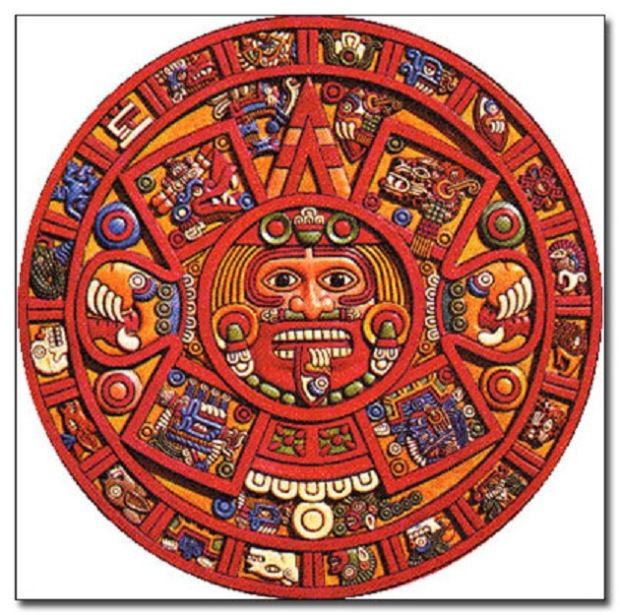






















 medians and into oncoming traffic it turns out were premonitions, as a few years later they were proven to be horrifyingly correct. In 1998 to be exact, this problem became big enough to finally become a story in the mainstream media. Highway deaths, caused by a lack of places for sleepy truckers to park, were piling up in numbers too large to ignore any longer.
medians and into oncoming traffic it turns out were premonitions, as a few years later they were proven to be horrifyingly correct. In 1998 to be exact, this problem became big enough to finally become a story in the mainstream media. Highway deaths, caused by a lack of places for sleepy truckers to park, were piling up in numbers too large to ignore any longer. 
 But in ’91-’92, these realities had not been statistically blatant enough to make the evening news and went unnoticed. However our U.S. Congress was not completely oblivious to such effects of its cutbacks. “America can no longer afford to maintain its infrastructure,” they said in 1993 when they had the chance to appropriate money for ordinary maintenance.
But in ’91-’92, these realities had not been statistically blatant enough to make the evening news and went unnoticed. However our U.S. Congress was not completely oblivious to such effects of its cutbacks. “America can no longer afford to maintain its infrastructure,” they said in 1993 when they had the chance to appropriate money for ordinary maintenance.  To get themselves off the hook, they dared to call these highway and infrastructure funds “pork barrel.” And instead they wrote laws to crack down on the truck drivers and their employers for overtime driving…now that’s gonna find ‘em a place to pull over!
To get themselves off the hook, they dared to call these highway and infrastructure funds “pork barrel.” And instead they wrote laws to crack down on the truck drivers and their employers for overtime driving…now that’s gonna find ‘em a place to pull over!

 side road and turning back around again…almost as if that were part of the route—to make that kind of loop before proceeding.
side road and turning back around again…almost as if that were part of the route—to make that kind of loop before proceeding.





